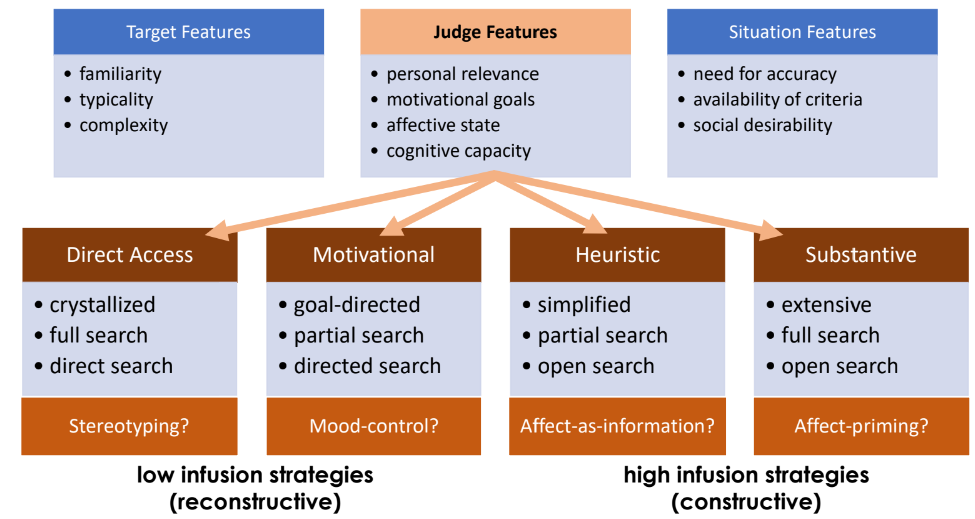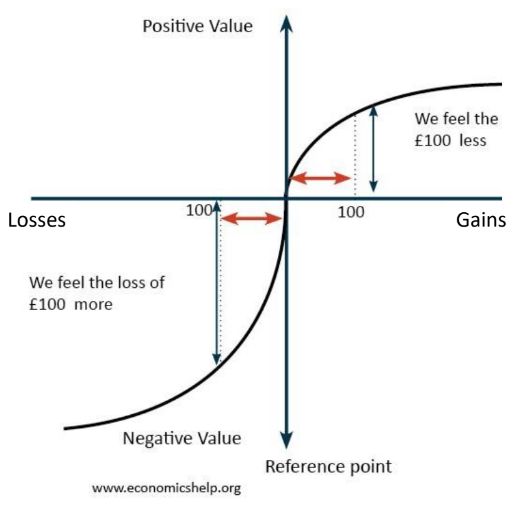Topic_3_slides__decision_making
1. Overview of Decision-Making
1.1 Definition of Decision-Making
The cognitive process resulting in the selection of a belief or a course of action among several alternative possibilities.
Influenced by the decision maker's values, preferences, and beliefs.
2. Motivation and Volition
Motivation: focuses on decisions of which goals are attractive and feasible (goal-setting)
Volition: involves the actions and thoughts directed towards achieving those goals (goal-striving)
2.1 The Rubicon Model of Action Phases
Is a theoretical model that illustrates the distinction between motivation and volition.
Highlights that motivation is always an interaction between a person and a situation, leading to the forming of intentions and making decisions.
Emphasizes the “point of no return” where a course of action is initiated.
The evaluation of the consequences that an action has will contribute to future deliberations (future motivation)
3. Influences on Judgments and Decision-Making
3.1 Affect-Infusion Model (Forgas, 1995)
Describes how affectively loaded information impacts the judgement process.
Our affect can influence our decisions

Low Affect Infusion Strategies:
Direct access: Direct access to preexisting evaluations.
Motivational: Motivated processing in service of a preexisting goal.
High Affect Infusion Strategies:
Heuristic: Heuristic processing (using minimal information).
Substantive: Substantive processing (involving comprehensive assessment of new information).
3.3 Drive Reduction Theory (Hull)
Proposed the assumption that individuals strive to maintain homeostasis and that behaviour is reinforced by terminating a negative experience (tension).
E.g., eating to reduce hunger.
3.4 Cognitive Dissonance Theory (Festinger, 1957)
Cognitive dissonance is an unpleasant state of arousal that stems from differences between our attitudes and our behaviour.
Emphasizes rationalization or change of attitude to resolve dissonance.
Example: We may think of ourselves as kind people but when we decide not to help someone, we might rationalize unpleasant thoughts away (“this person did not deserve it.”)
4. Decision-Making Theories and Models
4.1 Subjective Expected Utility Theory (SEU)
May be applied to decision situations where no objective mathematical probabilities are available, and judgments are no more than expressed beliefs about likelihoods.
Assumptions of SEU:
Comparability; you must be able to compare alternatives to each other (prefer A to B, prefer B to A, or indifferent between A and B)
Transitivity; you must be able to sort choices. If you prefer A to B and B to C, then you must also prefer A to C
Dominance; A dominant option is one that is better to another option in at least one respect and at least as good or better in every other respect. Dominant options must be preferred.
Independence; An outcome that is independent of or unaffected by a choice should not affect the choice
Invariance of preferences; The preference for an option should not be affected by how the option is described
4.2 Allais Paradox
Highlights inconsistencies in choices based on different framing of options, defying SEU predictions.
4.3 Prominence Effect
Decisions are often swayed by the most prominent attributes of options.
Example: choosing a car based on safety ratings.
4.4 Reason-Based Theory of Choice (Shafir et al, 1993)
Posits that people are influenced more by positive or negative attributes when selecting or rejecting options.
4.5 Evaluability Principle
Value interpretation relies on comparisons available.
Different contexts lead to different decision evaluations (e.g., buying a piano in a shop vs at an auction).
4.6 Prospect Theory (Kahneman & Tversky)
A descriptive model addressing decision-making under risk, distinguishing between gains and losses. Two phases:
Editing phase; ‘negligible’ components of the decision problem might be discarded, and a reference point is created, allowing to perceive outcomes as gains or losses
Evaluation phase; attitudes towards risks, which involve both gains and losses are utilized to evaluate the potential outcomes
Evaluates outcomes based on a reference point, explaining loss aversion (stronger reactions to losses than equivalent gains).
Loss Aversion: The value function is steeper for losses than it is for gains. People have stronger feelings about losses than they do about gains

Risky choice framed in terms of gains: individuals are risk-averse, preferring solutions that lead to a lower expected utility but with a higher certainty
Risky choice framed in terms of losses: individuals are risk-seeking, preferring solutions that lead to a lower expected utility if it has the potential to avoid losses
5. Heuristics and Biases
Heuristic: Simplification in judgment processes.
Bias: Inclination or prejudice affecting decision processes.
5.2 Common Biases and Heuristics in Decision-Making:
Status Quo Bias: Preference for existing conditions over change due to perceived losses.
Representativeness Heuristic: Estimating the likelihood of something by comparing it to a prototype that already exists in our minds
Availability Heuristic: Basing judgments on easily recalled information, often overlooking rarer events.
Anchoring Effect: Decisions influenced by initial reference points, affecting numeric estimates.
5.3 Design Thinking
Design thinking tools:
Visualization
Ethnography
Structured collaborative sense-making
Assumption surfacing
Prototyping
Cocreation
Field experiments
Biases in design:
Projection Bias (cat 1); A tendency to project the past or present into the future
Egocentric Empathy Gap (cat 1): Decision-makers consistently over-estimate the similarity between what they value and what others value
Hot/Cold Gap (cat 1): The (emotional) state of a decision- maker at the time of the prediction influences their assessment of the potential value of an idea
Focusing Illusion (cat 1): decision-makers tend to over- estimate the effect of one factor at the expense of others
Say/Do Gap (cat 2): Consumers are frequently unable to accurately describe their own current behaviour, much less make reliable predictions about what they want
Planning Fallacy (cat 3): People routinely describe their pasts as consisting of both positive and negative events, yet predict their futures as overwhelmingly positive
Confirmation Bias (cat 3): Decision-makers seek for information that supports their preferred alternative
Endowment Effect (cat 3): Decision-makers’ attachment to what they already have
Availability Bias (cat 3): Decision-makers undervalue options that are harder for them to imagine. Familiarity of an idea is likely to be inversely related to its novelty
6. Mitigating Biases in Decision-Making
6.1 Strategies to Reduce Biases
Mitigating cat 1 biases:
Collection of deep data on customer concerns and perspectives
Improving decision-makers’ ability to imagine the experiences of others
Insisting that innovation tasks be carried out by diverse teams
Mitigating cat 2 biases:
Help participants to understand their own needs, for example by making them recount an experience
Prototyping and observing participants
Mitigating cat 3 biases:
Better testing through perspective taking and ethnography
Surface unarticulated assumptions, and seeking questioning them by seeking disconfirming data
Creating and working with multiple options
Field experiments